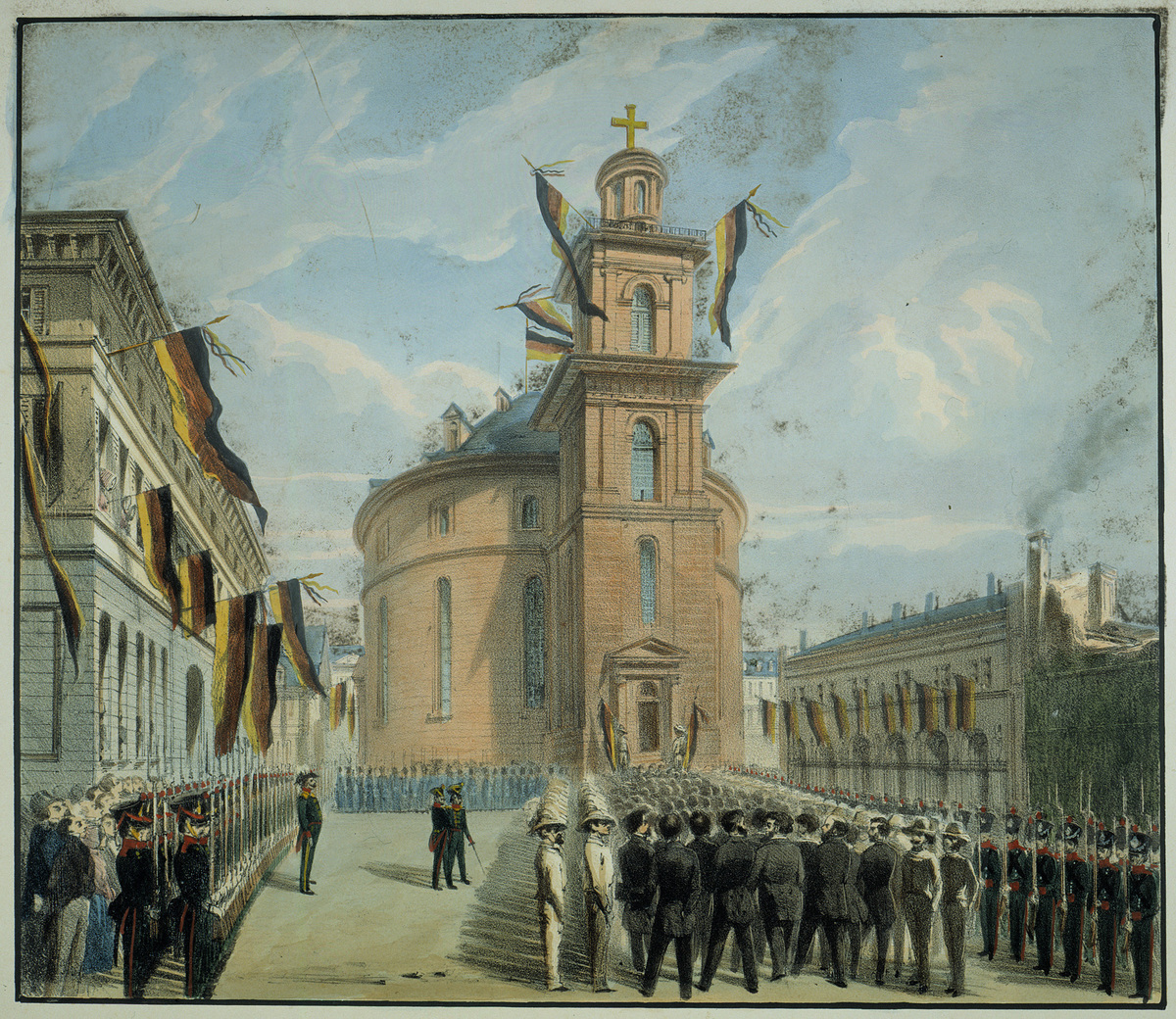Abstract
In this lithograph, a procession of delegates to the pre-parliament [Vorparlament] moves toward St. Paul’s Church in Frankfurt on March 30, 1848. The pre-parliament was a 500-member legislative body that determined the framework of subsequent political proceedings on the national level. The resolutions of the pre-parliament were accepted by the German Bundestag (the Federal Diet or executive organ of the German Confederation) without resistance, and they laid the groundwork for the Frankfurt National Assembly (also known as the German National Assembly, or the Frankfurt Parliament). The entry of delegates is depicted here as a solemn event. The delegates are dressed in black, and numerous black-red-gold Republican flags punctuate the scene. The square was secured by a cordon of militia (in blue), and the delegates were protected by rows of gymnasts (in white uniforms and wide-brimmed hats). (Since their inception, gymnastics clubs had represented national and Republican ideals.) The presence of these two groups was no doubt attributable to mounting tensions. Delegates were split into two major factions—one advocating constitutional monarchy, the other Republican ideas. Each group had brought along followers who were ready to use violence, and this threatened to break up the pre-parliament altogether. Contemporary color lithograph by Jean Ventadour (1822–c. 1880).
